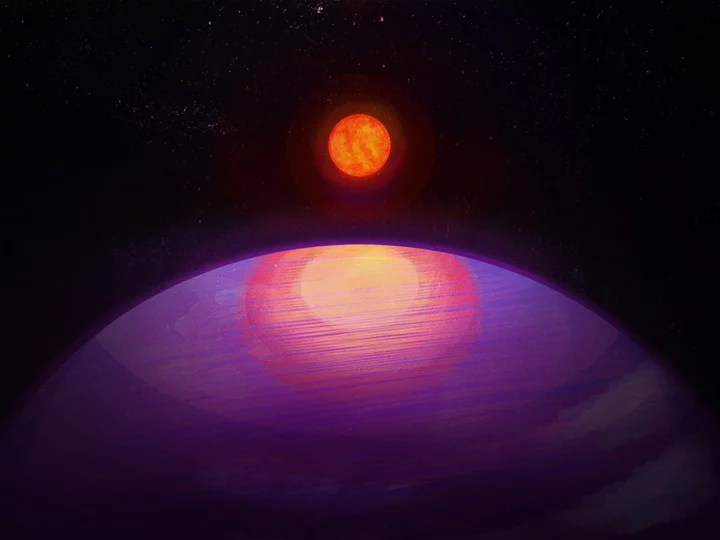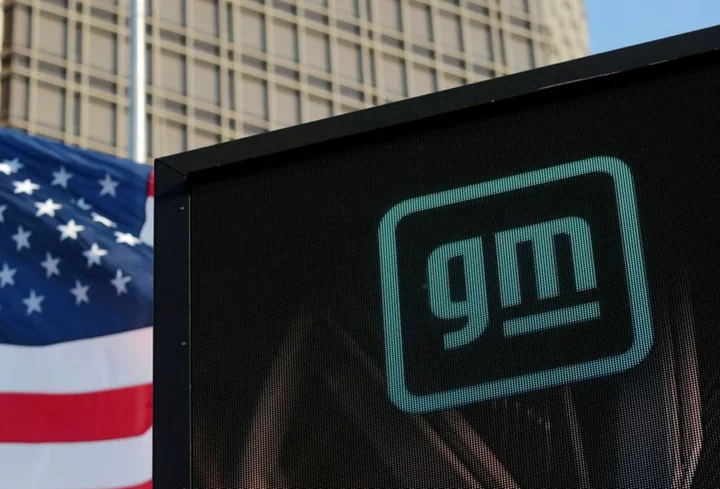
Scientists find huge planet that shouldn’t exist
Scientists have found a vast planet, so large that it should not exist. The planet appears to be too big for its sun, and therefore calls into question our understanding of how planets and solar systems form, according to the researchers who found it. The planet is more than 13 times as massive as Earth. It orbits around a star that is nine times less massive than our Sun. As such, the ratio between the two of them is 100 times higher than it is between the Earth and our sun. It is the first time that a planet with such a high mass has been seen orbiting a star with such a low amount of mass. And the discrepancy is so large that scientists thought such a planet could not exist. “This discovery really drives home the point of just how little we know about the universe,” said Suvrath Mahadevan, from Penn State. “We wouldn’t expect a planet this heavy around such a low-mass star to exist.” When stars are formed, out of large clouds of gas and dust, that material sticks with the star as a disc that orbits around it. Planets can then form out of that extra material, and go on to make a planetary system like our own. But science would suggest that the disc around the star in the new paper, known as LHS 3154, would not have enough material to make a planet so large. “The planet-forming disc around the low-mass star LHS 3154 is not expected to have enough solid mass to make this planet,” Mahadevan said. “But it’s out there, so now we need to reexamine our understanding of how planets and stars form.” The finding is reported in a new paper, ‘A Neptune-mass exoplanet in close orbit around a very low mass star challenges formation models’, published in Science. Read More Astronomers find unprecedented ‘disc’ around distant planet Planet too big for its sun ‘is challenging the idea of how solar systems form’ Elon Musk’s SpaceX rockets are punching holes in edge of space
1970-01-01 08:00

Yellen says US economy does not need drastic tightening, 'soft landing' on track
By Howard Schneider BESSEMER CITY, North Carolina U.S. Treasury Secretary Janet Yellen said on Thursday she believes the
1970-01-01 08:00

The Whiteboard: Ranking the best NBA players who can't be traded until Dec. 15
Players who signed contracts this offseason can't be traded until Dec. 15. Today on The Whiteboard, we're ranking the trade chips about to become available.
1970-01-01 08:00

Tractor Supply Raises Over $1 Million to Fund FFA Future Leaders Scholarships
BRENTWOOD, Tenn.--(BUSINESS WIRE)--Nov 30, 2023--
1970-01-01 08:00

BoC to cut rates starting in Q2 2024, house prices seen flat in 2024: Reuters poll
By Mumal Rathore BENGALURU The Bank of Canada will start cutting interest rates in the second quarter of
1970-01-01 08:00

Mary Kay Expands to Hungary, Elevating Beauty and Empowerment in Central Europe
DALLAS--(BUSINESS WIRE)--Nov 30, 2023--
1970-01-01 08:00

TOYO Corporation Acquires Leading European Dynamometer Manufacturer Rototest
FREMONT, Calif.--(BUSINESS WIRE)--Nov 30, 2023--
1970-01-01 08:00

Mysterious yellow glass found in Libyan desert 'caused by meteorite', say scientists
A meteorite which smashed into earth 29m years ago may be behind a strange yellow glass found in a certain part of the desert in southeast Libya and southwestern Egypt, according to researchers. The Great Sand Sea Desert stretches over about 72,000 square kilometres across the two countries, and is the only place where the mysterious yellow material is found on Earth. Researchers first described it in a 1933 scientific paper, calling it Libyan desert glass. Mineral collectors have long valued it for its beauty and mysterious qualities – and it was even found in a pendant in Egyptian pharaoh Tutankhamun’s tomb. The origin of the glass has been a mystery for centuries, but researchers writing in the journal De Gruyter used new advanced microscopy technology to get answers. Elizaveta Kovaleva, a lecturer at the University of the Western Cape, wrote that the glass was caused by “the impact of a meteorite on the Earth's surface”. Writing in The Conversation, she said: “Space collisions are a primary process in the solar system, as planets and their natural satellites accreted via the asteroids and planet embryos (also called planetesimals) colliding with each other. These impacts helped our planet to assemble, too.” She said: “We studied the samples with a state-of-the-art transmission electron microscopy technique, which allows us to see tiny particles of material – 20,000 times smaller than the thickness of a paper sheet. “Using this super-high magnification technique, we found small minerals in this glass: different types of zirconium oxide (ZrO₂).” One of the types of this mineral found in the glass can only form at temperatures between 2,250 celsius and 2,700 celsius. Toasty. Kovaleva said: “Such conditions can only be obtained in the Earth's crust by a meteorite impact or the explosion of an atomic bomb.” However, she wrote, there are just as many questions as there are answers. The nearest known meteorite craters are too far away and too small to be the cause of that much glass all concentrated in one part of the world. “So, while we've solved part of the mystery, more questions remain. Where is the parental crater? How big is it – and where is it? Could it have been eroded, deformed or covered by sand?” Safe to say, the scientists will keep on looking until they have the answers. How to join the indy100's free WhatsApp channel Sign up to our free indy100 weekly newsletter Have your say in our news democracy. Click the upvote icon at the top of the page to help raise this article through the indy100 rankings.
1970-01-01 08:00

GM sees EV cost cuts as it looks to profit from green vehicles -CFO
By David Shepardson WASHINGTON General Motors said on Thursday it expects significant reductions in electric vehicle production costs
1970-01-01 08:00

GraniteShares plans to boost leverage levels on US single-stock ETFs
By Suzanne McGee GraniteShares plans to increase the amount of leverage on most of its single-stock exchange-traded funds
1970-01-01 08:00

Oil prices fall amid skepticism on OPEC+ supply cuts
By Laura Sanicola (Reuters) -Oil prices fell on Thursday after rising by more than 1% earlier in the session after
1970-01-01 08:00

2023 NFL Redraft: Panthers pass on Bryce Young for more
A revised look at the 2023 NFL Draft's top 10 picks — how rookie performances are reshaping initial impressions and draft choices.
1970-01-01 08:00
